
15 minute read
A President for the Unprecedented
Immediate Past President and guest editor of this edition of the journal reflects on her presidency.
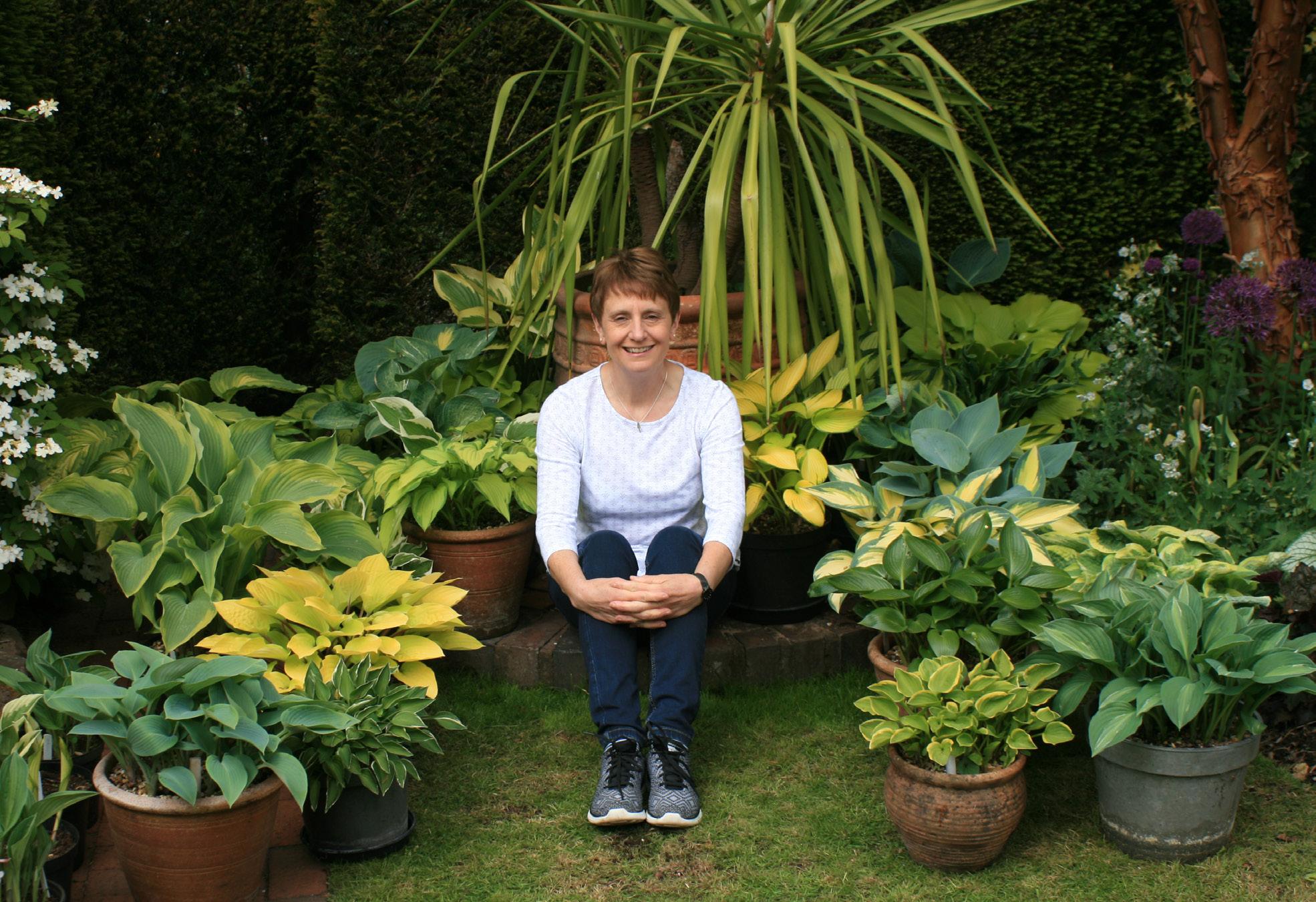
1. Working from home during lockdown
© Phil Champion
It’s strange to think that three years have passed. So much has happened and how different the world was when we gathered for the LI-90 Festival of Ideas at the Olympic Park, where Dr Wei Yang, the then RTPI Vice President, announced that I would be the next President Elect.
I remember being thrilled: thrilled that so many women had stood for election, after research had shown a widening gulf between male and female leaders in the profession. Thrilled that more members had voted than at any election since 2011. And thrilled that those members had put their faith in me. It gave me a deep sense of responsibility to do my best.
Back when I was campaigning to become President, I could never have foreseen what the next three years would bring. It has been unprecedented on so many fronts. Of course, we were all wise previously to the challenges we faced and that we still face today - in particular those of climate change and biodiversity loss (in fact, the temperature outside whilst I’m writing this article has reached a staggering 39 degrees). The relationship between human health and nature was a guiding principle of my manifesto – looking at the evershifting relationship between health and nature, and how we can turn our cities into places where both can thrive. The fact is that designing healthy places for people is not just a nice idea, but an achievable reality. In order to be elected, I prepared a manifesto outlining the issues that I believe were important to our profession; the balance of the built environment and nature; the relevance of our profession; skills; encouraging young people to join us; developing role models and leaders to champion our profession; support for our registered practices; and growing a strong supportive and modern professional Institute.
This is how I truly believe our profession can march in from the verges and take a leading role in delivering infrastructure. It’s the key intersection between the art and science of landscape: between the intangible and the tangible; the expressive and the evidenced; the beautiful and the biophilic. It’s what has underpinned my every agenda priority: the knowledge that with a strong, skilled, supported workforce, we are the profession best equipped to build a world where human health and environmental health could co-exist. Little did I know when I was elected how important the topic of health would become. COVID hit, lockdown came, and just like that, everything I’d expected of the coming two years was out the ‘attic window’. But had the vision really changed?
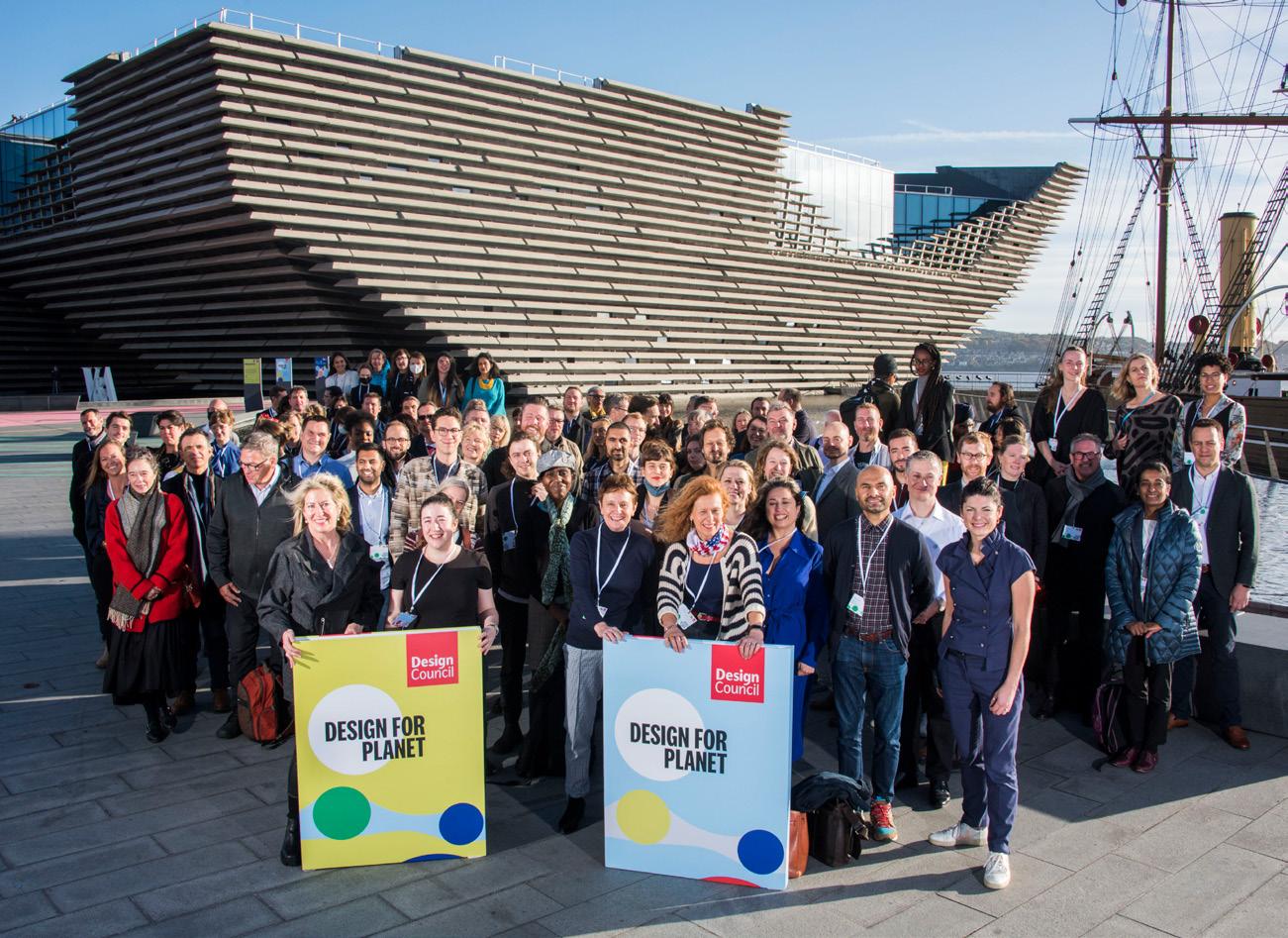
2. Design for Planet event at COP26
© Design Council
I’d wanted to improve the LI’s influence and relevance. When COVID gave us uncontested proof of just how valuable green spaces are to people, our work became more important than ever. I’d also wanted to improve diversity and inclusion in landscape. When COVID highlighted such stark inequality of access to nature, it became immediately clear that the people who plan and design our public places need to champion, and represent, all the communities we serve.
I’d also wanted to build a strong and supportive LI. When the business, learning, and welfare pressures of life under lockdown became apparent, it was clear the LI had to do everything we could to support our members through a difficult time.
The status quo shifted –dramatically – but the goals remained the same. My time as ‘Lockdown President’ is unprecedented and the way I had to work changed along with everyone else. It has been a challenging two years, adapting to these new ways of working with new colleagues from the LI team working remotely and connecting virtually with the membership. Conducting my formal role of chairing Board of Trustees and Advisory Council has been more challenging, those adhoc conversations and the relationshipbuilding we take for granted when meeting in person is more difficult when we are working remotely.
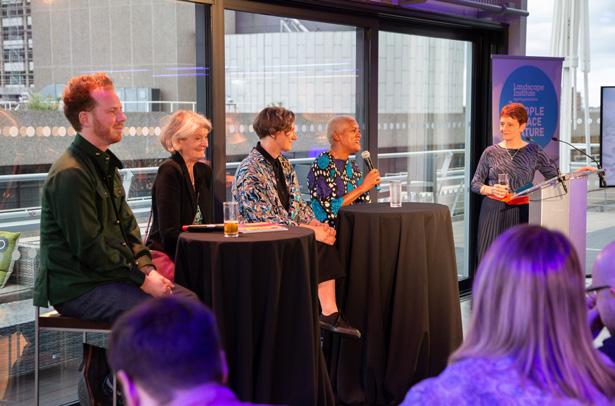
3. Panel discussion at the President’s Reception in May 2022.
© Ron Gilmour
If I had to do it all again, I probably wouldn’t do everything the same. But overall, I’m very proud of what we’ve achieved as an Institute in that time. We’ve created new opportunities for people to enter the landscape profession. Together with the Trailblazer group, the LI launched
-- Level 3 Technician apprenticeship and is working with delivery partners on the Level 7 Landscape Professional apprenticeship, both a fantastic way to future-proof the landscape sector.
-- We’ve transformed our digital offering overnight to deliver CPD, networking events, Pathway to Chartership exams, and more online. We’ve held two fully online Awards ceremonies – and by making them free and accessible to all, massively broadened the scope of how we showcase the very best of our wonderful profession.
-- We’re returning to the Troxy this year to celebrate in person – but we’ve learned a lot from the past two years and will make sure people can continue to access and enjoy the Awards online.
-- We’ve produced landmark policy work, including our Greener Recovery paper and Landscape for 2030, that demonstrate to decision makers the enormous benefits that landscape-led projects bring.
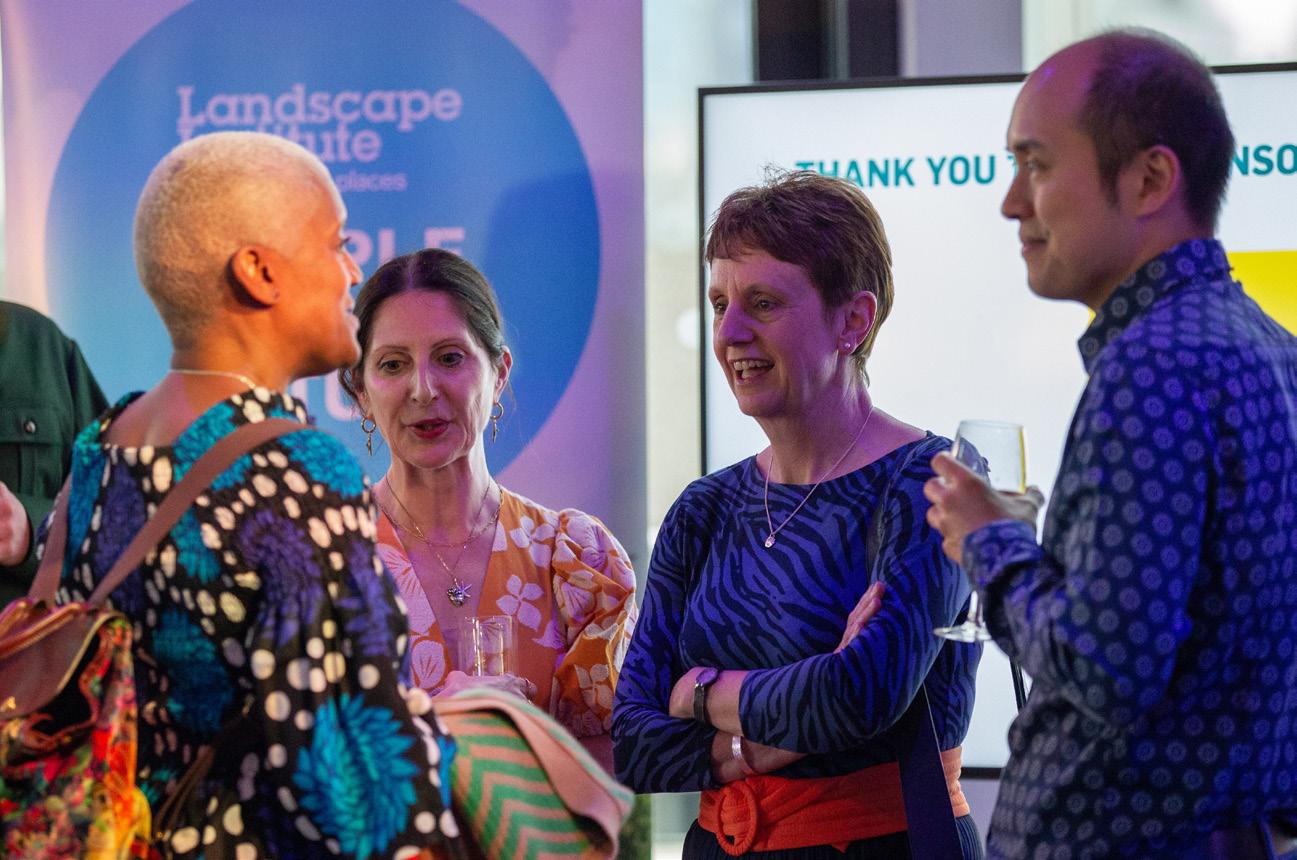
4. Arit Anderson CMLI, CEO Sue Morgan and Advisory Council member Wing Lai CMLI at the Presidents’ Reception.
© Ron Gilmour
COVID has had a huge influence on the way I have been able to perform my role and responsibilities, it has also presented many opportunities. My presidency is perhaps not as dramatic as others have been, but I may have been more visible than previous presidents and I have been able to really focus on the message, the link between healthy places and healthy people. The digital world has made the President more accessible to members through online conferences, webinars and digital coffee mornings than ever before, it is one of the positive outcomes of COVID and I have enjoyed meeting so many of you.
The LI CPD conferences in digital format have attracted a formidable list of influential speakers and have probably been one of the more enjoyable and exciting parts of my role as president. I have been privileged to share the company of some very impressive women, including Dame Fiona Reynolds (former DG of the National Trust), Baroness Brown of Cambridge (member of the House of Lords and chair of the Climate Change Committee’s Adaptation SubCommittee), Carolyn Steel (architect and author) and Kotchakorn Voraakhom (Thai landscape architect and influencer).
I like to be on the front foot, so for each conference I will carefully prepare with a morning coffee just as we go live, posters falling off the wall, internet outage, speakers dropping offline and having to adlib, or our recently adopted dog performing ‘zoomies’ behind me. I have learnt so much during my tenure as LI President, it is the best CPD I have ever done, and it’s been great fun!
As soon as the world opened up last September, I took every opportunity to speak at conferences, sit on panels and chair in-person events to champion our profession. The LI went to COP26, where we championed the fundamental importance of an integrated, landscape-led approach to securing a sustainable future. We attended MIPIM and put green at the heart of the debate at the world’s leading property conference.
Smaller crowds than in previous years led to a different kind of MIPM experience with different priorities and successes. The published programmes were pretty much the same as they’d always been. By the time March arrived, the conversation had shifted fundamentally with environmental, social and governance (ESG) suddenly rising to the top of the agenda. Social value, nature-based placemaking, sustainable design were everywhere.
In fact, by day 3 it was all MIPIM News talked about, and we were on hand to have those important discussions with the decision makers, developers and financiers.
We attended the UK’s Real Estate Investment and Infrastructure Forum as a partner at the Beyond Net Zero pavilion. The LI was also represented at the first-ever Footprint Plus conference in Brighton, to continue making sure that policymakers and investors know the value of nature-based solutions. I spoke about the benefits and the importance of parks and green open space on national radio, attending industry awards to celebrate the best the sector has to offer. Meeting with CEOs and presidents of other built environment institutes enabled me to build relationships and emphasise the importance of professional collaboration to solving the challenges we collectively face.
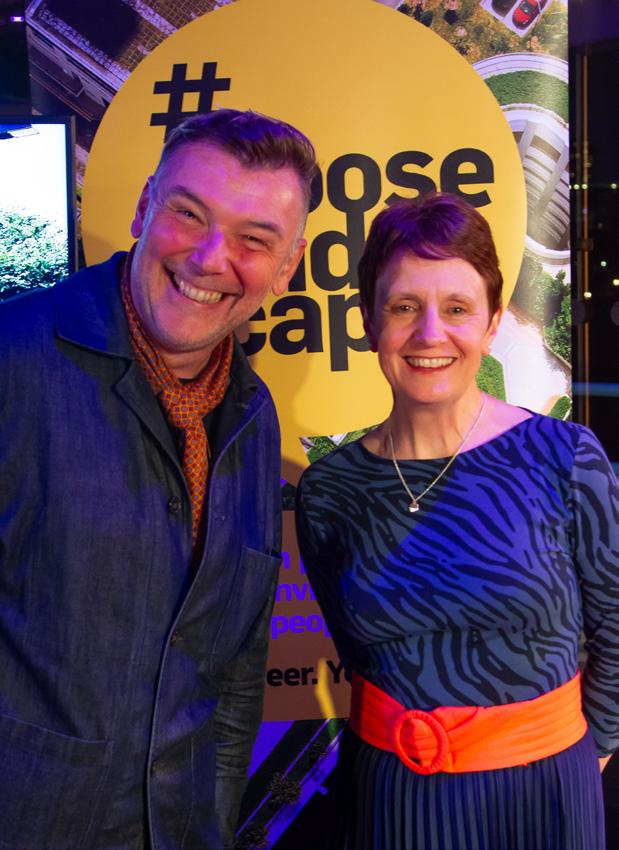
Collaboration with other built environment institutes - with Timothy Crawshaw President of the RTPI.
© Ron Gilmour
Even through the final month of my presidency I continued to champion the relevance of our profession as creative problem solvers, banging the landscape drum to the very end!
These last two years haven’t all been plain sailing – at times it has been quite a stressful and demanding personal challenge for me, for example working with three different CEOs during my term in office, would be disruptive and challenging for any organisation. Historically and in recent years the Landscape Institute has experienced a higher turnover of staff, elected officers, trustees, staff and volunteers, as well as a higher than usual number of internal disagreements and complaints on issues which relate to aspects of governance and operation of the LI.
For the future of our Institute and the welfare of the staff and volunteers it was imperative that the Board of Trustees addressed the regularly occurring issues surrounding governance and member behaviour. We commissioned an independent review to ensure that the LI was fit for the future, to make us a more equitable and stronger organisation. Completed towards the end of 2020, this significant piece of work involved consultation with a wide range of individuals across the LI. It made recommendations to improve our ways of working and to improve longstanding issues that continue to hamper the work of the LI and successive presidents. I’m pleased to report that the first phase of this work has been completed despite a challenging couple of years and many of the recommendations are now business as usual. There is a two-year change programme to deliver the more complex improvements to operations, strategy and more.
This last couple of years have been a wake-up call for humanity. Not only did we realise that nature was so important to us – we realised that human activity was so detrimental to nature. COVID changed how the last two years played out. But it didn’t change what matters.
Every negative effect we have on our environment is a negative effect on us.
No matter the crisis, no matter the variables, no matter the ever-shifting ecology of today’s world, human health and environmental health are the same. We humans are, and always have been, part of our biosphere.
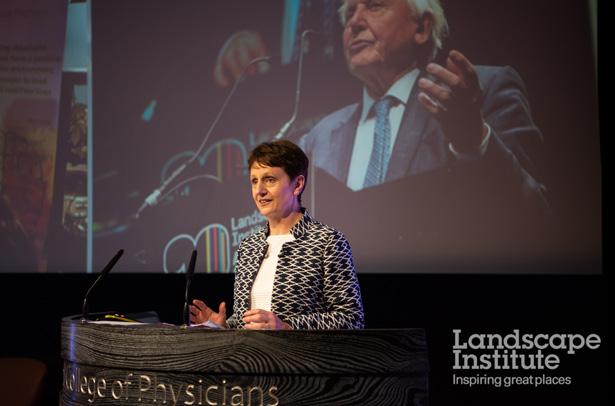
6. 2022 Graduation Ceremony.
© Andrew Mason
The world needs planners, designers, managers and more who work with nature, not against it. Whose projects make a difference not just in one area, but across multiple areas. That is us, that is our domain and I’ve said it many times before, and I’ll say it again: our time is now. And key to our success is healthy collaboration with organisations in the built environment sector.
Anyone who feels that the profession has either lost or is losing its way needs to watch the footage of the online awards ceremonies. Many of the acceptance speeches were made by the younger members of our profession. It portrays a profession that is confident in itself and in its message. Yes, we still need wider recognition within the general public, but you are never going to convince people of your value if you don’t have a feeling of self-worth.
For the first time in my career, I feel that the profession is finally emerging as a force in its own right. What we all need to do is support the enthusiasm, vigour, and ability to see things through fresh eyes, which is evidenced by our younger members.
The role of President is ephemeral, our time at the helm is short. I have merely scratched the surface and, with other challenges we have faced over the last two years, there is never sufficient time to complete the job. That is why continuity is crucial, driving forward the LI strategy and not losing sight of the goal of the LI to lead and inspire the landscape profession, to ensure it is equipped to deliver for the benefit of people, place and nature, for today and for future generations.
Our apparent difficulty in making ourselves heard and influencing is something that has long dogged our profession and will not change if all our efforts are channelled into regular “governance navel gazing”. It’s not what most of our membership want. They need a dynamic, modern professional institute that supports them on their career journey, that will champion our sector, grow our profession and ensure the highest standards.
We are passionate about our work, our profession, and our legacy but we are poor at self-promotion. Kathryn Gustafson sums it up beautifully, “Landscape Architects are a shade-loving species.”
Landscape Architects need to become advocates. We need to ‘convince our elected leaders that this (landscape) is important stuff’.
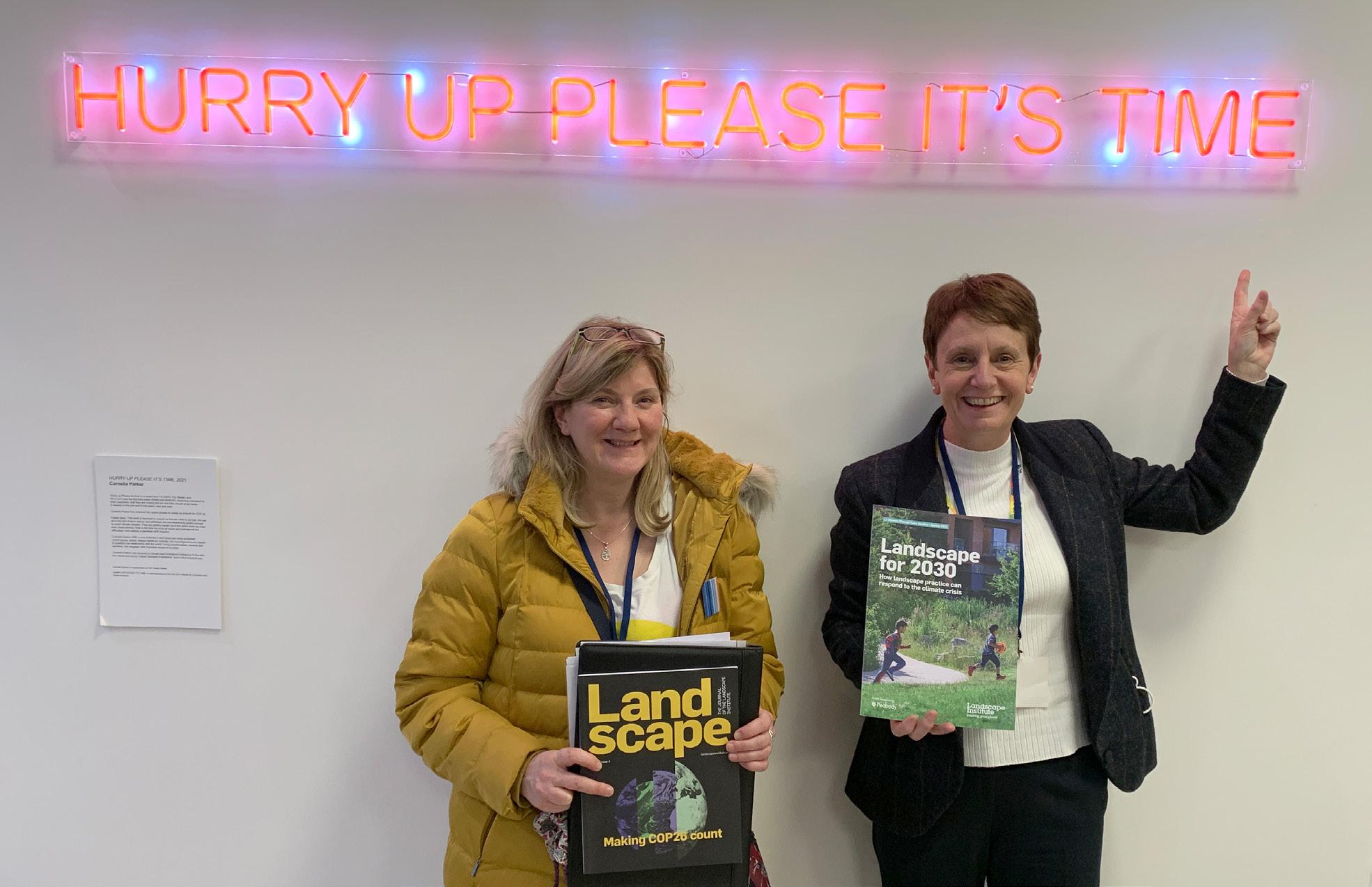
7. The LI attended COP26 in Glasgow working with Scotland branch chair Rebecca Rylott.
© Sue Morgan
So, what should we prioritise for the next 20 years?
Leadership
Landscape architects are “generalists” in nature and have a broad understanding of climate change, social inequalities, the built and natural environments. We need to use this knowledge to work with allied professionals by leading and uniting teams to create greater environments for people. By becoming leaders, we will create and greatly improve the environments and places that allow everyone to thrive.
We should encourage and support the next generation, those young leaders and role models, through development and mentoring programmes to become leaders of our profession. They must be helped and encouraged to become involved in the LI and to stand for election on Advisory Council, an honorary officer role, or to volunteer for a position on a committee.
Political Leadership
We need a strategy for placing more landscape architects into the elected, appointed, and bureaucratic offices where the big decisions about how to plan, design, and manage the land are made. This is how we construct a positive feedback loop between private and academic practice, which can bring invention and creativity, and government, which offers a tremendous scale of impact.
Education
For landscape architects to become changemakers, we must change how they are taught. Landscape schools should create more opportunities within their programmes to: Develop the ability and capacity in students to engage in the political process to create change; understand better the language and systems of power; accept the responsibility of professionals as engaged citizens and as members of a democracy.
-- Build knowledge and capacity beyond the traditional core of the profession; engage in collaboration on research, teaching, and service with other disciplines; learn from how other fields generate, disseminate, and apply knowledge, and how they engage the public and advance their agenda.
-- Encourage more red-brick universities to provide accredited courses to cover all aspects of landscape.
Equality, diversity and inclusion
It’s one of the LI Strategic goals, but we are not there yet. The LI must actively promote a profession that is balanced, diverse and inclusive, representing the communities we design for and which addresses the dearth of black practitioners.
We are fortunate to work in a broad profession that attracts people from all walks of life. The gender balance of those at the start of their careers has always been even and today there are more women entering the profession than ever before. However, there’s still a long way to go before women are represented equally at the more senior levels as practice principals and business owners.
Landscape architects and landscape professionals are holistic – we understand both natural surroundings and built environment, and the interface between them. With our skills and expertise, we are positioned to handle the questions of how we plan and design our urban and rural spaces the face of the monumental problems we face. Our contribution to society is pivotal and vital as we address both the built and natural environment. We have a once-in-a-generation opportunity for our profession to excel - landscape professionals “must become a sun-loving species.”
I’m truly proud to have served as your President. And I’m confident that, with passion, skill, and support, our Institute will continue to go from strength to strength.
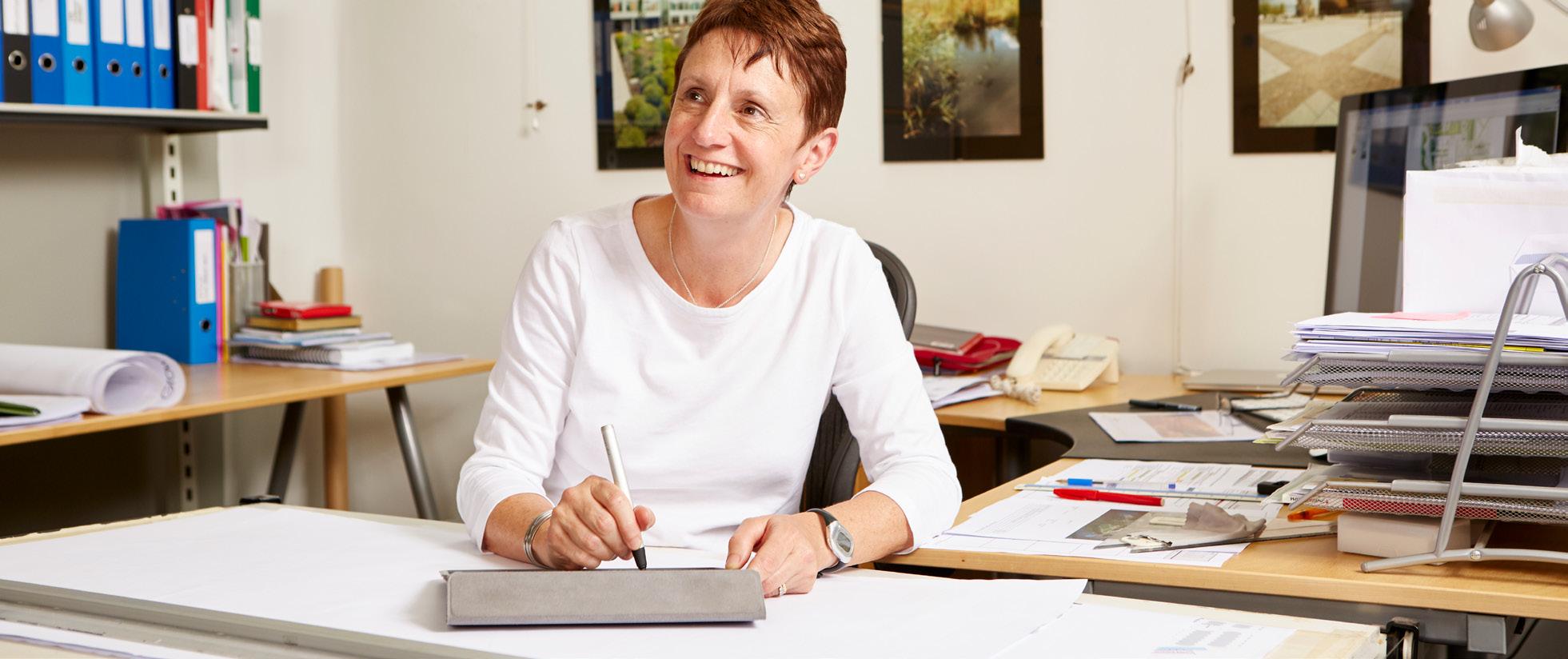
8. Jane is one of the founding Directors of Fira with offices located in Birmingham’s Jewellery Quarter.
© FIRA
Jane Findlay

Jane Findlay
Immediate Past President and guest editor of this edition of the journal reflects on her presidency.










